Podcast listening will hit record numbers by 2025. Content creators are quickly jumping in to grab their share of the audience. Many newcomers face one big question: what podcast gear do they really need? Starting with budget gear or going all-in with pro equipment can make a huge difference in sound quality.
A good microphone, quality headphones and reliable recording software are must haves. Many new podcasters go for versatile mics like the Samson Q2U which has both USB and XLR connections. Over 70% of podcaster’s wear headphones while recording to monitor audio quality.
Whether you’re just starting or wanting to upgrade this guide has got you covered. This complete article shows you everything in podcast equipment that fits your budget. We'll look at options ranging from starter gear to high-end professional setups. You'll discover the tools and technologies needed to create professional-sounding podcasts in 2025 and beyond.
What Equipment Do You Need to Start a Podcast?
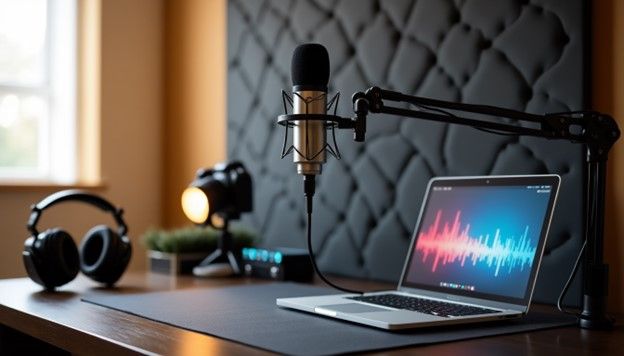
Starting a podcast needs specific equipment to ensure professional audio quality. The original setup needs four essential pieces of equipment that are the foundations of any podcast setup.
Microphone
A quality microphone is the lifeblood of podcast recording. Dynamic microphones excel at picking up sounds from one direction and make them perfect for podcasting. USB microphones give beginners plug-and-play simplicity, while advanced users often prefer XLR microphones to get superior audio control.
Headphones
Headphones are significant in podcast production, and more than 70% of podcasters use them while recording. Your best bet is closed-back headphones because they offer better sound isolation and stop audio bleeding during recording sessions. On top of that, most podcasters choose over-ear designs because they stay comfortable during long recording sessions.
Computer or Laptop
A reliable computer or laptop works as the command center for podcast production. The ideal specifications need a minimum of 8GB RAM to process audio smoothly. On top of that, it helps to have multi-core processors like Intel Core, Apple M1, or AMD that boost editing and production tasks.
Camera (for video podcasts)
Video podcasts need careful camera selection. High-quality cameras should have quick autofocus and support external microphones. Many creators start with smartphones since modern phones can shoot HD video. Notwithstanding that, dedicated cameras give more flexibility through interchangeable lenses and better low-light performance.
Choosing the Right Podcast Microphone
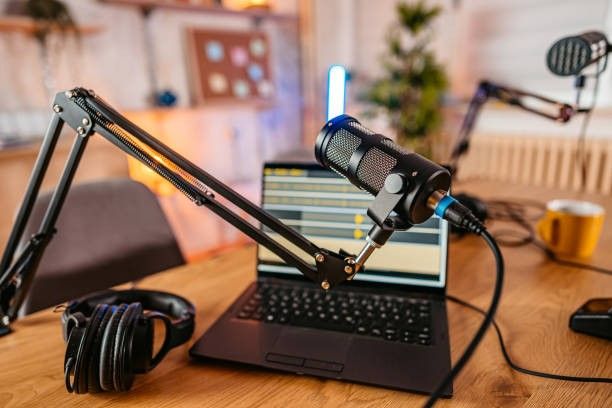
Choosing the right microphone means understanding how technical features affect your recording quality.
USB vs. XLR Microphones
Podcasters need to choose between USB and XLR microphones. USB microphones plug straight into computers and are ready to use. XLR microphones need an audio interface but deliver better sound quality and can be upgraded.
Understanding Polar Patterns
Microphone polar patterns play a key role in sound capture. Cardioid patterns focus on sounds coming from the front and cut down background noise. Sound comes in equally from all directions with omnidirectional patterns. Bidirectional patterns pick up sound from both front and back.
Dynamic vs. Condenser Microphones
Dynamic and condenser microphones each have their strengths. Dynamic microphones work great in noisy spaces and handle loud sounds perfectly. These features make them perfect for vocal recordings. Condenser microphones catch subtle sound details but need phantom power and quiet recording spaces.
Frequency Range
A microphone's frequency range shows what sounds it can pick up. Most professional podcast microphones cover frequencies from 20 Hz to 20 kHz, which matches what human ears can hear. Sound quality depends on resolution, measured in bits and sample rate. Standard podcast recordings use either 16-bit or 24-bit depth with 44.1 kHz or 48 kHz sample rates.
Resolution
Resolution shows what level of detail a microphone can capture. Higher-resolution microphones create cleaner audio signals, especially when recording in 24-bit format. The better resolution gives you an improved dynamic range and less quantization noise compared to a standard 16-bit recording.
Best Podcast Microphone Recommendations
Podcasters know that choosing the right microphone means finding the perfect balance between budget and technical needs. Let’s look at some top microphone options at different price points.
Studio Quality, All-In-One USB & XLR Dynamic Microphone

If you're on a low budget, check out the Studio Quality All-In-One USB & XLR Dynamic Microphone. This affordable option boasts a super cardioid pickup pattern and SPL of ≥125dB ensuring crisp clear sound. The microphone includes in-built noise cancellation with AI suppression technology to cut out bothersome background noises like keyboard sounds. A rugged metal boom arm holds up to 3.3 pounds without a shake and lets you shift it 180° vertically and 360° horizontally.
NearStream AM10U USB Condenser Microphone
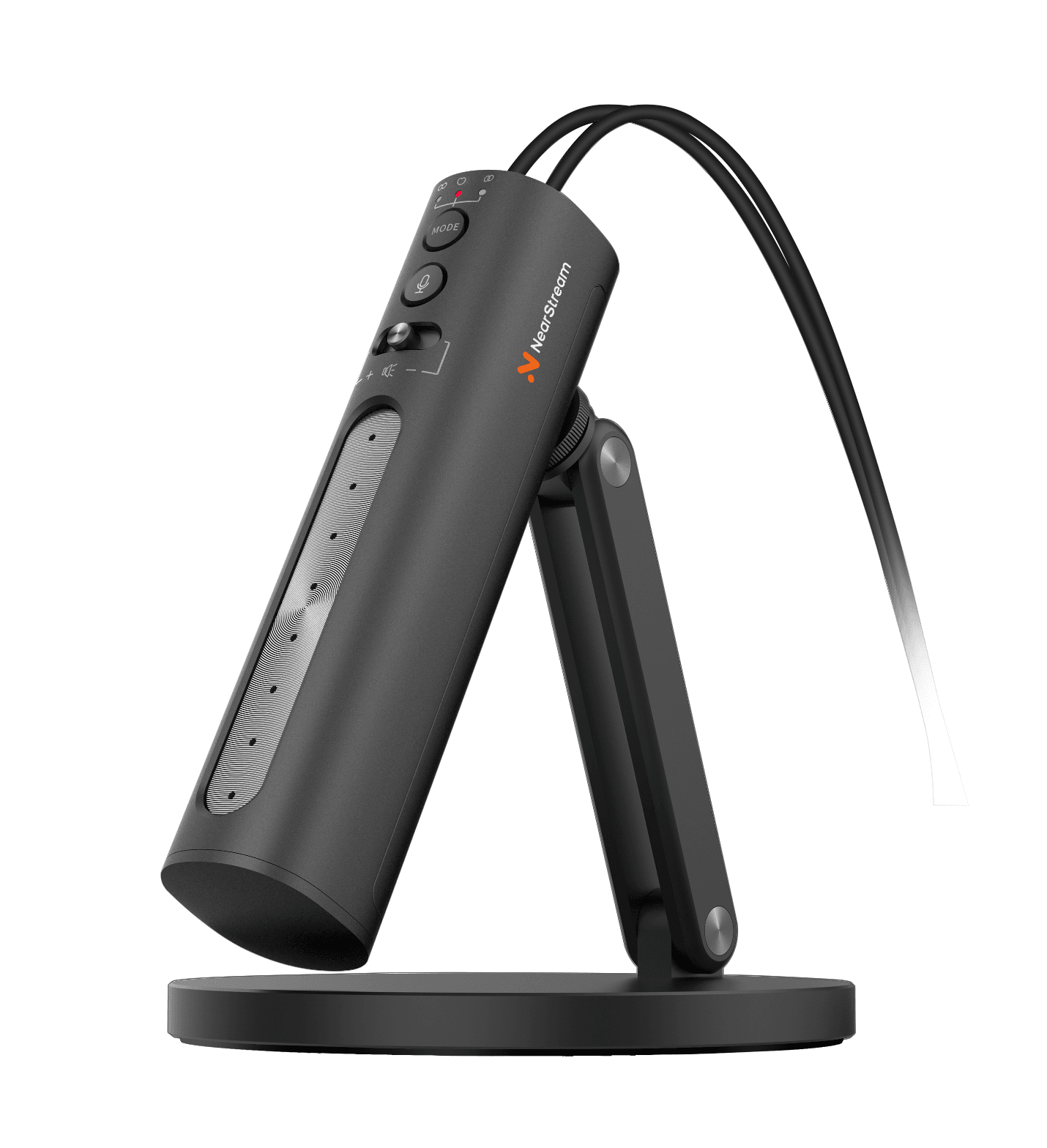
If you have a medium-range budget, go for the NearStream AM10U USB Condenser Microphone. It features an 8-microphone array and beamforming technology that is high-end and helps capture clear and detailed audio. You'll get a whopping 70dB vocal signal-to-noise ratio that captures clean audio within a 3-meter radius. The mic switches between three pickup patterns - omnidirectional, cardioid, and bi-directional - so you can switch based on your recording needs.
USB & XLR Condenser Microphone

For high-budget premium users, the USB & XLR Condenser Microphone stands out. The premium users will love the AM15X dynamic microphone with high clarity through its super-cardioid pattern and high SPL of ≥125dB. The 4-in-1 smart knob in this variant gives you delicate control over gain and noise cancelation.
Premium Multi-Purpose Wireless Microphone
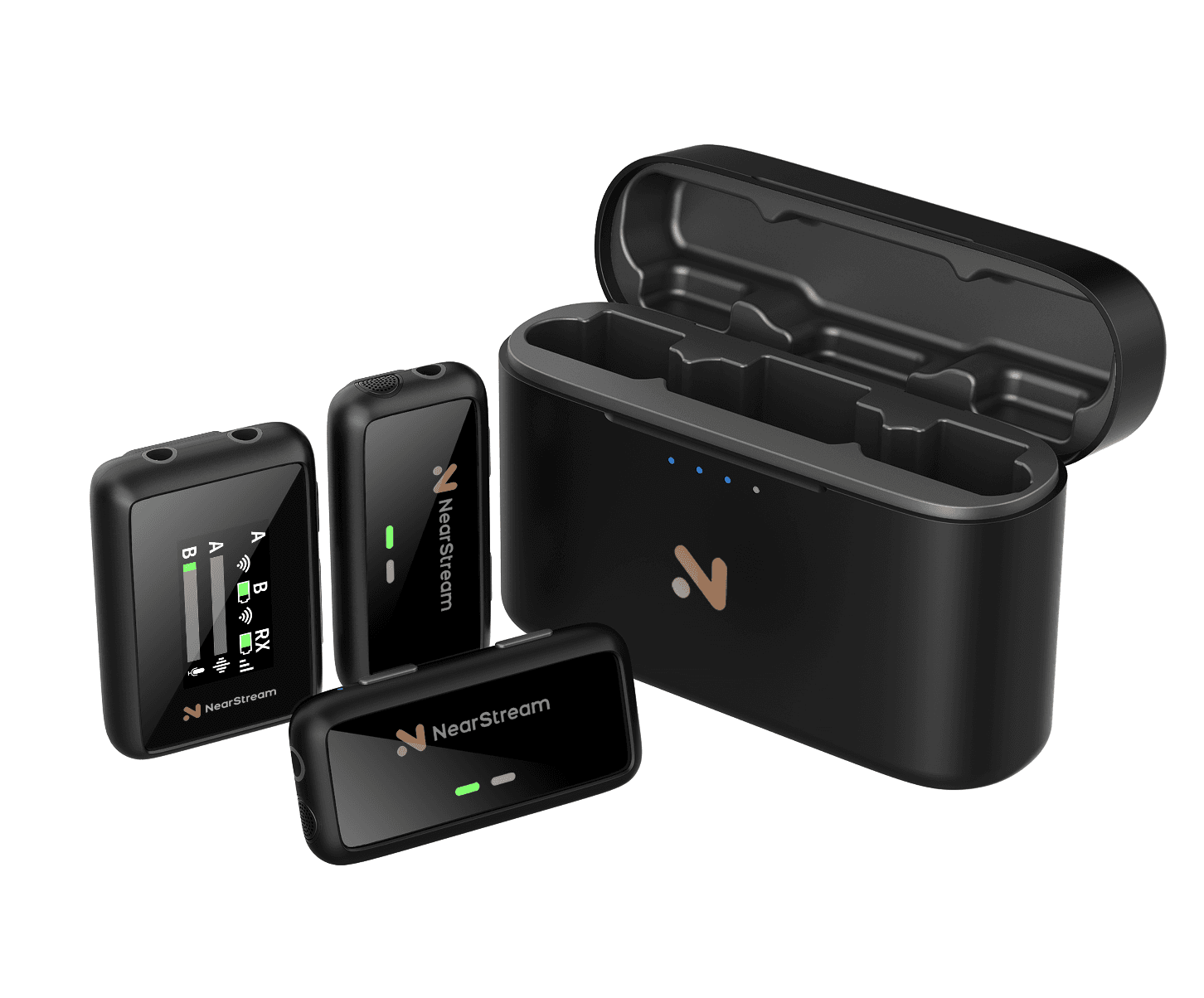
If you have a higher budget, consider the Premium Multi-Purpose Wireless Microphone. This device excels in mobile recording and works with iPhone, Android, PC/Mac, and DSLR cameras. Podcasters who need flexibility will appreciate this portable choice that produces high-quality audio.
Choosing the Best Podcast Headphones
Professional podcast headphones are essential monitoring tools for audio production. We tested various technical specifications to help you pick the right pair for your podcasting needs.
Frequency Range
Sound reproduction depends on the frequency range. Professional headphones usually work between 20 Hz and 20 kHz. This range will give a perfect balance of low bass tones and high treble frequencies that lets you control audio quality while recording and editing.
Open-back vs. Closed-back Headphones
Open-back and closed-back designs each have their strengths. Open-back headphones create natural sound and a wider soundstage that works great for mixing and mastering. As with closed-back models, they shine at sound isolation and prevent audio leakage during recordings.
Comfort and Fit
Comfort and fit are crucial for long recording sessions. The right combination of adjustable headbands, replaceable ear cushions, and lightweight designs reduces fatigue. Your ear cup size should cover your ears to create a proper seal and steady audio monitoring.
Wired vs. Wireless
Wired connections provide reliable, uninterrupted signal flow without delay issues. Wireless options give you mobility but might cause slight delays or need battery management. Wired headphones deliver better performance for professional podcast production.
Microphone Type (attached or not)
Standalone headphones produce superior sound than gaming headsets with internal microphones. Dedicated podcast microphones produce superior sound than inbuilt microphones of headphones.
Best Podcast Headphones Recommendations
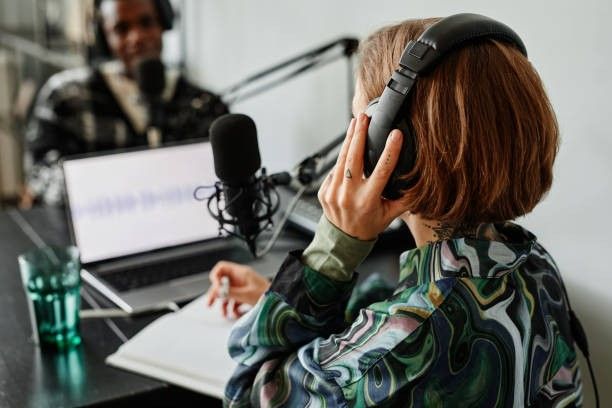
Quality headphones are the foundation of podcast monitoring and editing. These recommendations cover different price points and provide unique benefits for podcast production.
Low Budget: Audio Technica ATH-m20x
The Audio Technica ATH-m20x is perfect for new podcasters who want to grow professionally. Its closed-back design and 40mm drivers deliver clear audio monitoring with a frequency response range of 15-20,000 Hz. The headphones perform well at sound isolation with the circumaural design. The build is rugged and can handle regular studio usage.
Mid Budget: Sony MDR7506
Sony's MDR7506 has become a standard in the industry, without doubt, because of its flat frequency response and accurate sound reproduction. The headphones pack 40mm drivers with neodymium magnets that deliver pristine audio across the 10-20,000 Hz range. They fold easily and come with a carrying case, which makes them great for studio and remote recording.
High Budget: Shure SRH1540
The Shure SRH1540 delivers premium audio monitoring quality. These high-end headphones use 40mm neodymium drivers housed in carbon fiber and aluminum alloy. The alcantara ear cushions keep you comfortable for those long editing sessions. Their broader frequency response of 5-25,000 Hz captures subtle audio details that are vital to professional podcasting.
| Model | Type | Frequency Range | Key Feature |
| ATH-m20x | Closed-back | 15-20,000 Hz | Isolation |
| MDR7506 | Closed-back | 10-20,000 Hz | Portability |
| SRH1540 | Closed-back | 5-25,000 Hz | Premium Audio |
Podcasting Computers: What to Look for
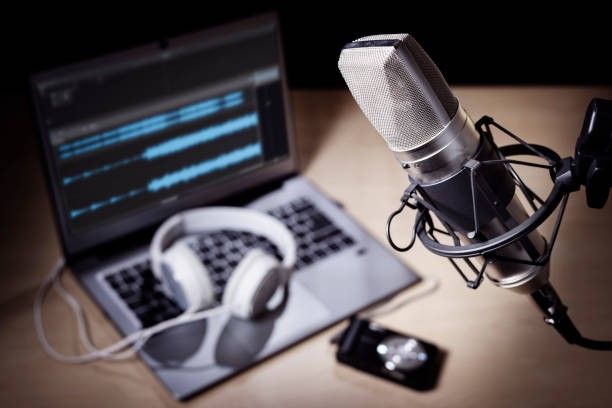
Choosing the right computer for podcast production depends on several technical requirements. Your computing system works as the central hub that handles recording, editing, and storing podcast content.
Storage space
The amount of storage space decides how many episodes you can store and edit at once. SSDs with at least 500GB are a great way to get quick file access and better reliability compared to traditional hard drives. External drives or cloud storage can help with long-term storage needs.
Portability and Battery Life
Battery life and portability become crucial when you record podcasts on location. Your laptop should run for at least 6 hours under a heavy workload. Power-efficient processors strike a balance between performance and mobility. Good cooling systems prevent overheating during long recording sessions.
Operating System
Your choice of operating system impacts software compatibility and workflow. MacOS comes with built-in audio tools that work smoothly with professional recording software. Windows lets you use more hardware options with better customization. Linux systems are affordable alternatives with special audio production versions.
A processor must handle multiple audio tracks without lag. This needs multi-core capabilities for live processing. You'll want at least 16GB of RAM to run recording software among other apps smoothly.
Best Podcast Computers and Laptops Recommendations
Modern podcast production relies heavily on computing power, and different laptop models can give content creators unique advantages. Let's look at some solid recommendations at various price points.
Low Budget: Acer Aspire 5
The Acer Aspire 5 works well as a starter podcasting laptop. It comes with an Intel i5-13420H processor and integrated graphics. You'll find a 15.6-inch Full HD display that shows editing interfaces clearly, and its 8GB RAM can handle simple multi-track recording tasks. The 512GB SSD gives you quick access to your project files.
Mid Budget: Apple MacBook Air
The Apple MacBook Air with M2 chip packs exceptional performance in a compact design. Its fanless construction keeps recording sessions quiet, and built-in audio processing makes podcast production smoother. You can record for up to 18 hours on battery power without worrying about plugging in.
High Budget: Apple MacBook Pro
The 14-inch MacBook Pro stands out as a powerhouse for professional use. Its M3 Pro chip breezes through complex multi-track recordings, and 16GB RAM lets you run multiple audio apps at once. A sophisticated thermal system keeps performance strong during heavy editing sessions, making it perfect for professional podcast studios.
| Model | Processor | RAM | Storage | Display |
| Acer Aspire 5 | i5-13420H | 8GB | 512GB SSD | 15.6" FHD |
| MacBook Air | M2 chip | 8GB | 256GB SSD | 13.6" |
| MacBook Pro | M3 Pro | 16GB | 512GB SSD | 14.2" |
Selecting the Best Podcast Camera for Video Podcasts
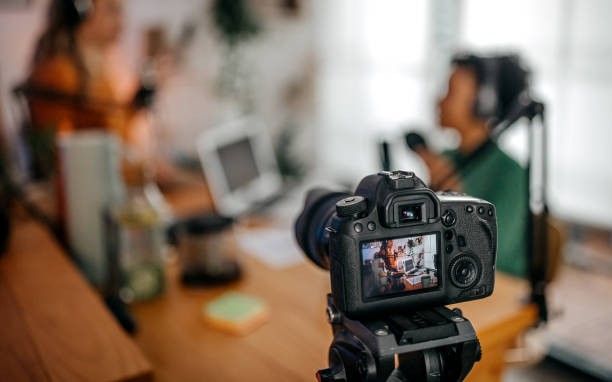
The visual quality of video podcasts determines their success.
Type of Camera
The right camera choice is vital for video podcasting success. There are three main camera types: DSLR/mirrorless cameras, webcams, and dedicated streaming cameras. Each offers different benefits based on your needs and budget.
Video Resolution
Video resolution needs to keep changing. 4K is now becoming the norm. You need at least 1080p resolution at 30 frames per second to get professional quality output. Higher resolutions let you edit better in post-production and future-proof your content.
Frame Rate
Frame rates affect how smooth your video looks. While 30fps works as a starting point, 60fps creates much smoother motion that's perfect for dynamic content. Higher frame rates also let you create slow-motion segments to add creative flair.
Autofocus and Low-Light Performance
Video quality depends on autofocus and low-light performance. Advanced autofocus systems keep your subjects sharp throughout the recording. Better low-light capabilities mean consistent image quality even when lighting conditions change, and you won't need as much extra studio lighting.
Portability
Size, weight, and battery life matter for mobility. Compact cameras make mobile recording easier, but professional cameras give you better image quality at the expense of portability. Your battery should last as long as your recording sessions, and you might want external power options for longer shoots.
Best Podcast Camera Recommendations
Your choice of camera directly impacts your video podcast's visual quality. NearStream offers three excellent cameras at different price points that give content creators distinct advantages.
Low Budget: DSLR Quality Optical Streaming Camera
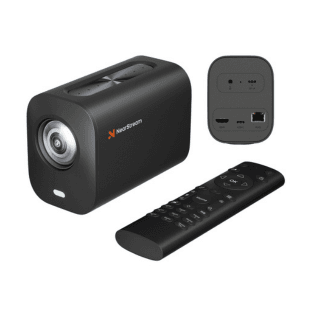
The NearStream VM20 is a great starter camera with professional features. This DSLR-quality optical streaming camera records 4K video at 30fps and comes with state-of-the-art auto-focus technology. Its built-in noise reduction system will give you crystal-clear audio, which makes it perfect for solo podcasters and small studios.
Mid Budget: 10X Optical Zoom Wireless Streaming Camera
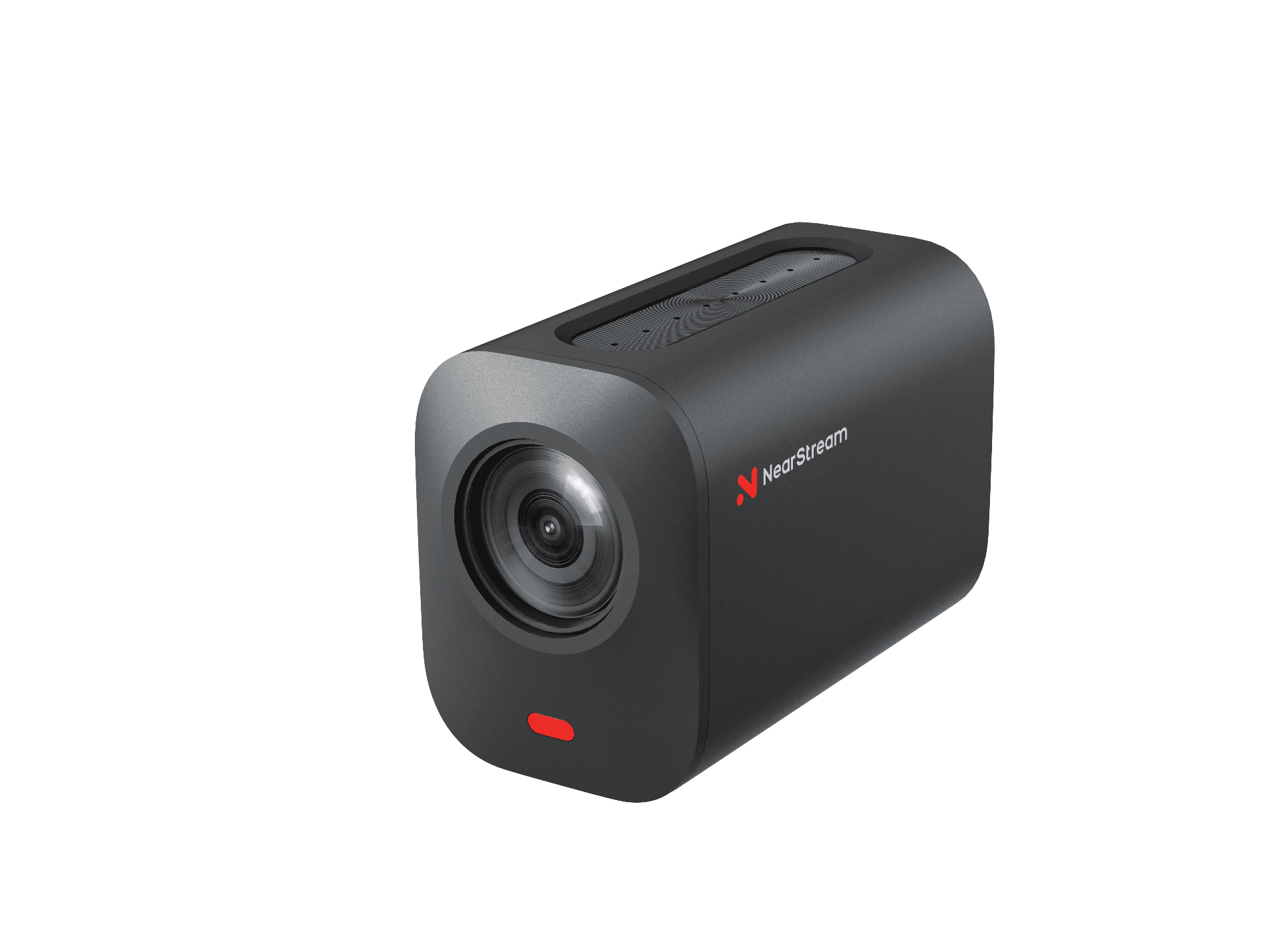
The NearStream VM33 takes things up a notch with its impressive 10X optical zoom. This wireless streaming camera blends mobility with professional features and captures footage at 4K/60fps with advanced image processing. You can control camera movements smoothly during live recordings with its remote functionality.
High Budget: Innovative 4K AI-Powered Optical Zoom Streaming Camera
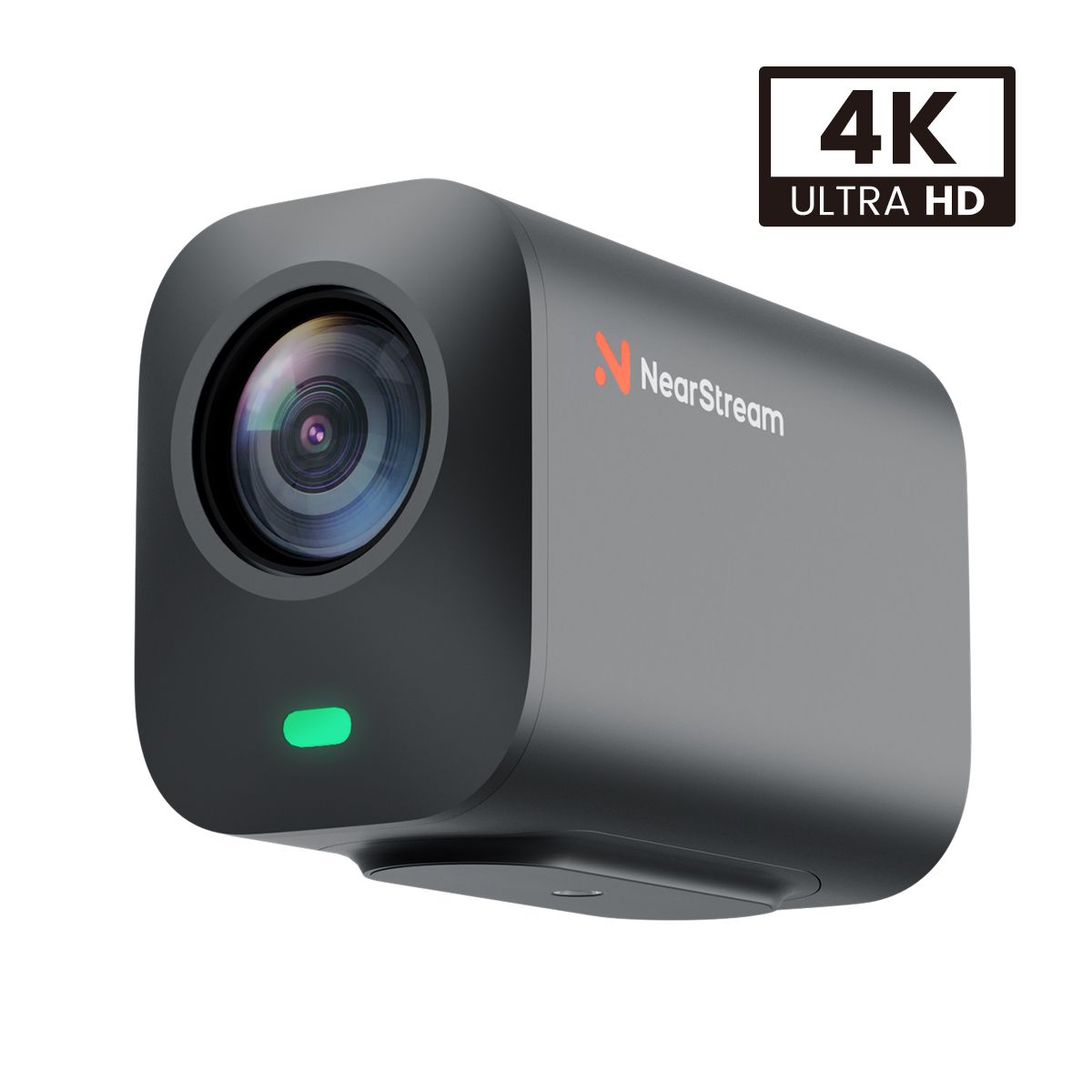
Professional podcast studios will love the state-of-the-art NearStream VM46. This AI-powered camera uses smart tracking algorithms to follow subjects automatically and keeps perfect framing throughout your sessions. Its PTZ (pan-tilt-zoom) control system allows precise adjustments, while superior low-light performance maintains consistent image quality in any studio lighting condition.
Bonus: Advanced Podcasting Gear for Pro Setups
If you're an experienced podcaster looking to enhance your production quality, upgrading your equipment can make a significant difference. Below are some essential audio and video recording tools to take your podcast to the next level.
Audio Recording Equipment
Professional podcast setups just need specialized equipment that goes beyond simple gear. A broadcast-quality production studio needs several extra components to work well. To achieve superior sound quality, consider upgrading your setup with the following tools:
Audio Interface
Audio interfaces connect XLR microphones to computers. These devices turn analog signals into digital format and give you multiple input channels for complex recording setups. Professional interfaces come with preamps, phantom power, and let you monitor your audio directly.
Microphone Arms and Stands
Microphone arms and stands give you flexible positioning options. Professional boom arms rotate 360 degrees, manage cables internally, and mount securely to your desk. Floor stands work great for standing recordings or setups with multiple mics.
Shock Mounts
Shock mounts keep your microphones safe from vibrations and handling noise. These suspension systems use elastic bands or springs to block unwanted sounds from reaching the microphone capsule. The shock mounts ended up keeping the audio clear during dynamic recording sessions.
Pop Filters
Pop filters are essential barriers that block plosive sounds. These mesh screens sit between you and your microphone to reduce harsh consonant sounds that can ruin recordings. Professional filters use dual-layer designs to protect better. Nylon pop filters are affordable, while metal mesh options offer enhanced durability and sound quality.
Video Recording Equipment
Investing in proper lighting and stabilization equipment for video podcasters can greatly improve production quality.
Video Lighting
Proper lighting enhances the visual quality of video podcasts. Options include LED panels, softboxes, ring lights, and on-camera lights. Look for adjustable brightness and color temperature settings.
Tripod
You can't make professional-quality videos without stable camera support. Tripod stands to to give you reliable support and free up your hands while you host or interview. The Manfrotto Befree series is built to last and works great for long-term studio use. Consider weight capacity, height adjustability, and head type (ball head, 3-way, or fluid head).
Upgrading your podcasting setup with high-quality audio and video gear ensures professional production value. Whether you're recording in a studio or on the go, these tools will help you achieve superior sound and visuals.
Optimizing Your Podcast Equipment with Recording & Editing Software
Creating a professional-quality podcast requires more than just high-end equipment; it also relies on the software you use to record and edit your content. Even the most expensive microphones and cameras will fall short if the software compresses your recording, resulting in poor audio and video quality. Using the right tools ensures you get the most out of your equipment, delivering top-notch content to your audience every time.
Choosing the right software for podcast recording and editing is crucial to producing high-quality audio. The best tools offer clear sound capture, intuitive interfaces, and robust editing features. Here are some top choices:
Adobe Audition – A professional-grade DAW (Digital Audio Workstation) with advanced noise reduction and multi-track editing.
Audacity – A free, open-source option with powerful editing tools for beginners and pros alike.
GarageBand – Ideal for Mac users, offering an easy-to-use interface with essential mixing and editing features.
Reaper – A budget-friendly, highly customizable DAW with excellent plugin support.
Hindenburg Journalist – Designed specifically for podcasters, featuring automatic audio leveling and voice optimization.
Each of these options helps enhance your podcast’s audio quality while streamlining the editing process.
What is NearStream? How to Set Up Your Studio with NearStream
For those looking to optimize their podcasting setup, NearStream is another excellent tool that can help. This App makes multi-camera podcast production easier with several key features. It supports HEVC/H.265 recording for high-quality video and has an auto-director function for smooth camera transitions. Users can customize device buttons for quick control and integrate third-party accounts for a more streamlined workflow.
This NearStream App works on both iOS 13+ and Android 7+ devices and lets you stream instantly to major platforms. NearStream's interface helps podcasters mix audio from multiple cameras' onboard systems while adding custom graphics and lower thirds.
Setting up a studio for your podcast is easy with NearStream. Here’s how to set it up:
Log in to NearStream – Sign in to your account to access the platform.
Create a New Studio – Click the "+" icon to create a new studio. Give it a name that represents your podcast and select your recording preferences, including whether you want to record both audio and video or just audio.
Adjust Your Settings – Once you’re in the studio lobby, set your camera and audio settings to ensure everything looks and sounds great. Choose your language for transcription and decide if you’re using headphones.
Invite Guests – If you’re recording with others, click the “Invite” icon, input their email addresses, or share the studio link directly with them.
Start Recording – When all participants have joined, hit the “Record” button to begin capturing your podcast.
By following these steps, you'll be on your way to recording a professional-quality podcast that’s sure to impress your listeners.
FAQs About Podcast Equipment
People starting their podcast journey often ask about equipment and costs. Let's look at the most common questions with current market insights.
How Much Does It Cost to Start a Podcast?
A basic podcast setup will cost you between USD 100.00 and USD 350.00. Professional and branded shows need larger investments that range from USD 500.00 to USD 5000.00. New podcasters can begin with minimal gear and focus on the basics like a microphone and simple editing software.
Do I Need a Microphone to Start a Podcast?
Phone microphones have improved by a lot, but dedicated microphones produce better audio quality. External microphones cut down background noise and capture vocals more clearly. You can get entry-level dynamic microphones for USD 50.00 to USD 150.00.
Can I Record a Podcast on My Phone?
Modern smartphones make podcast recording easier than ever. Phones with external microphones can create professional-quality audio. Recording apps come with features like:
Multi-track recording capabilities
Built-in editing tools
Direct publishing options
How Can I Achieve Studio Quality Without the Studio?
You can create professional audio at home with smart room choices and proper treatment. Pick rooms that have minimal outside noise and soft furnishings. Sound treatment with acoustic panels and correct microphone placement improves audio quality by a lot. Small, furnished spaces help absorb sound reflections and create cleaner audio without expensive studio setups.




































































